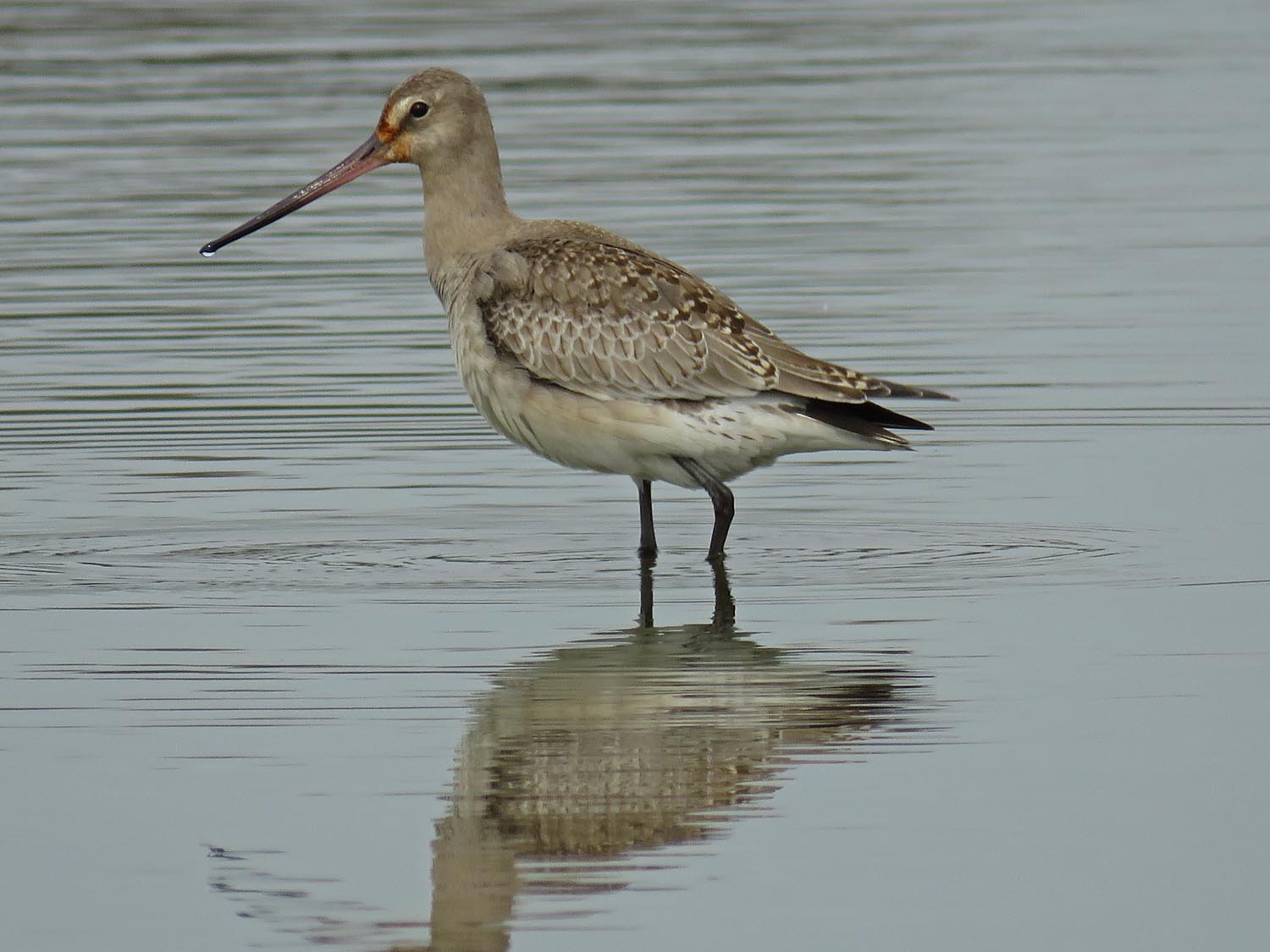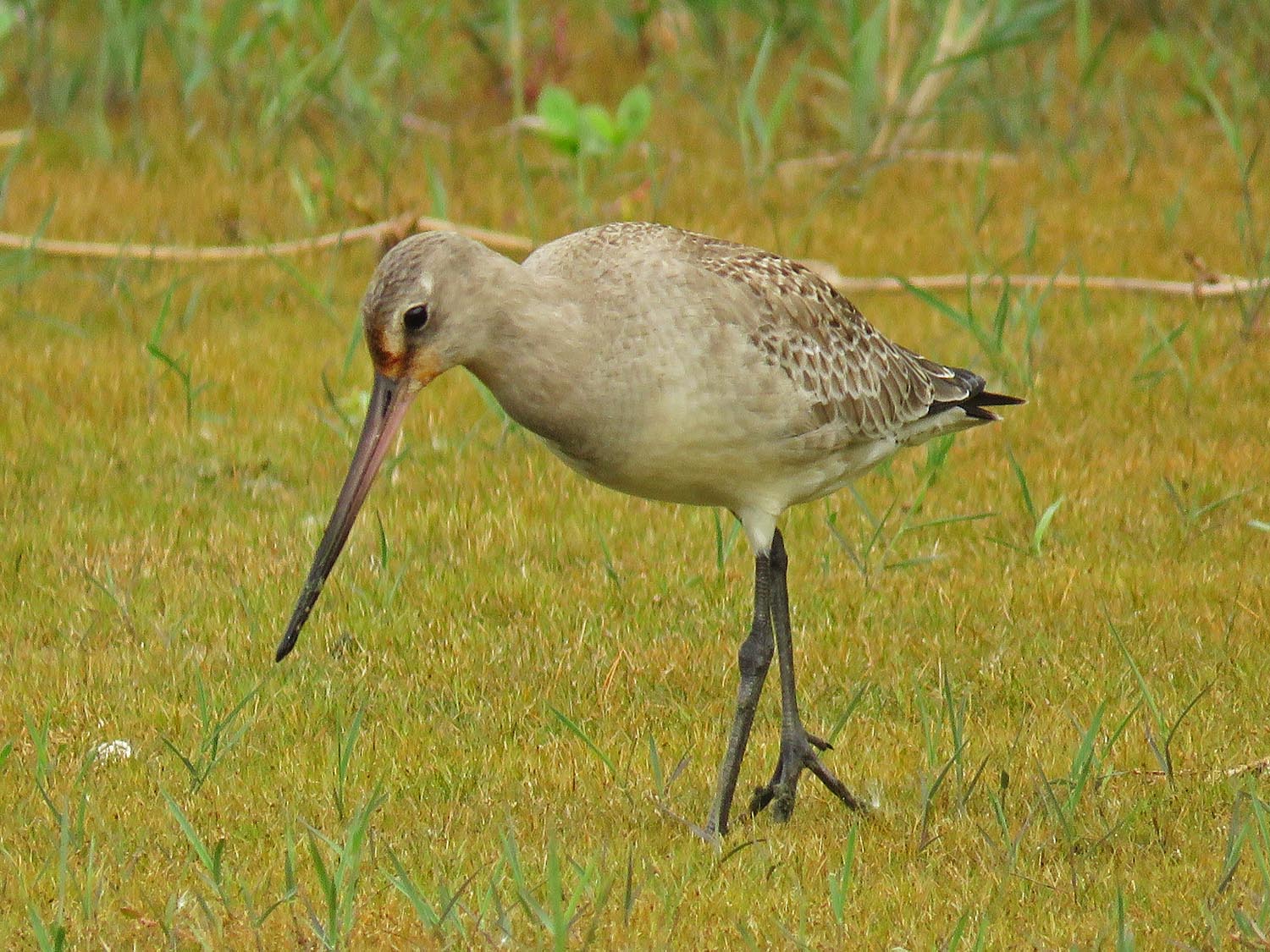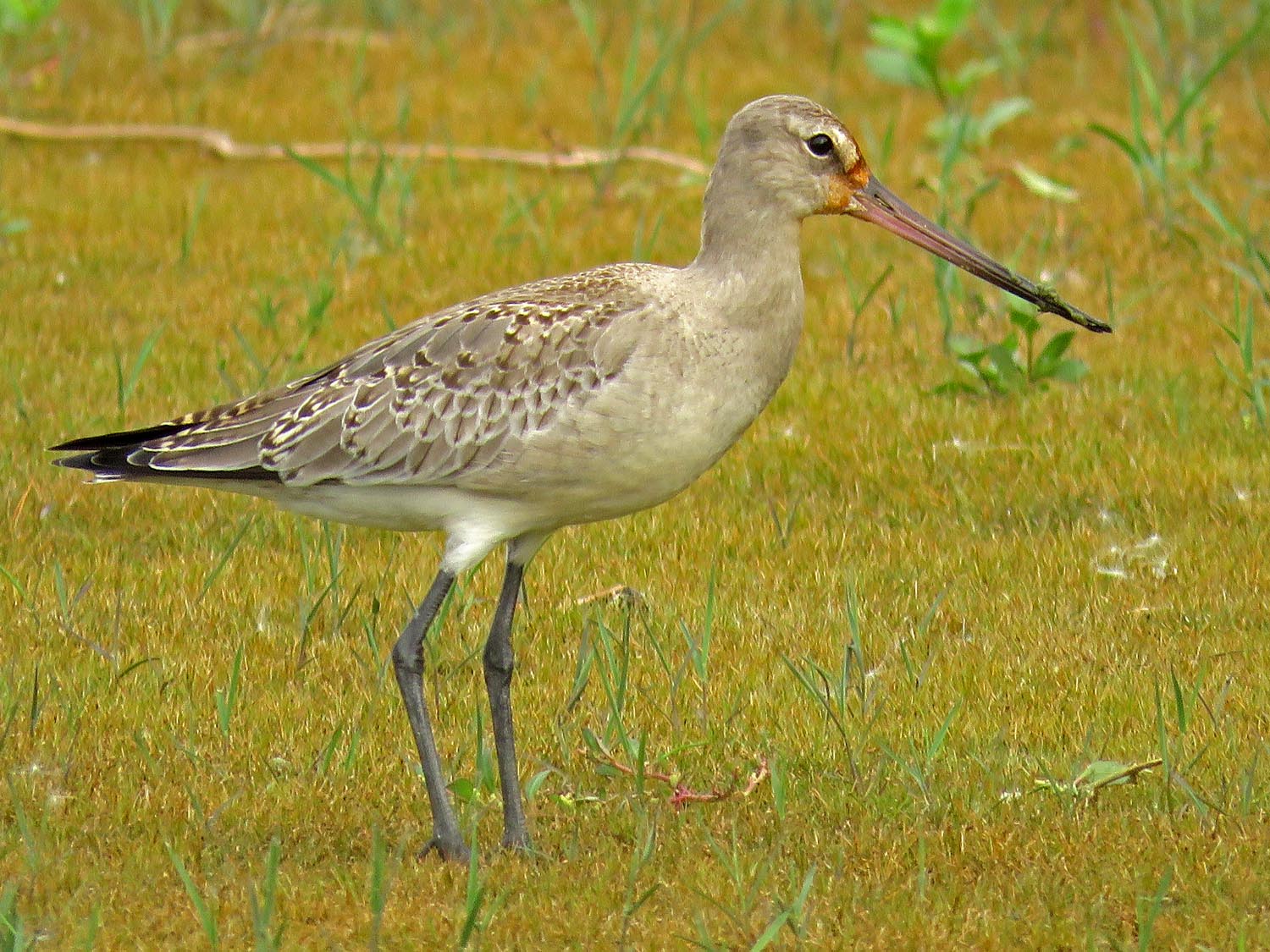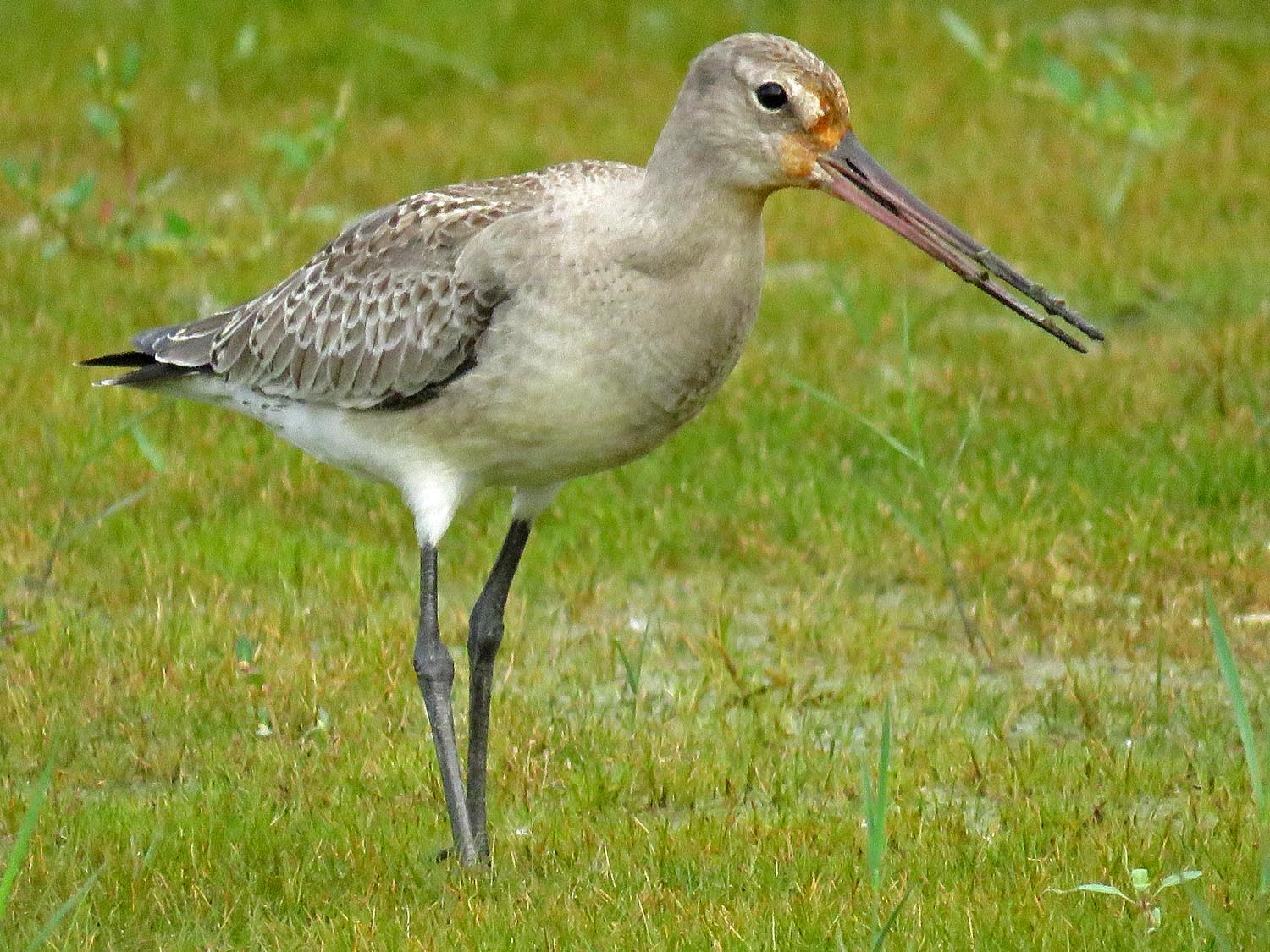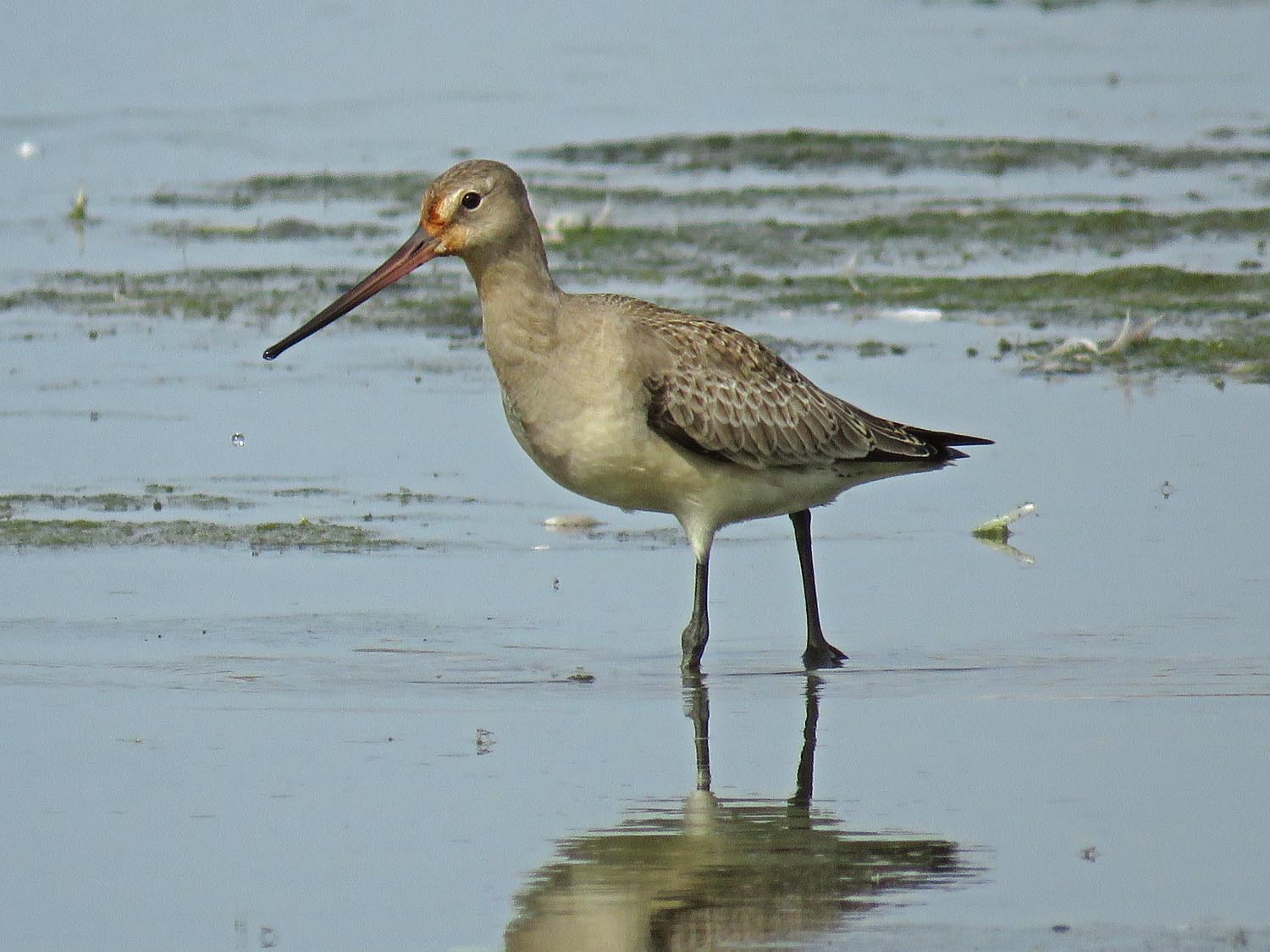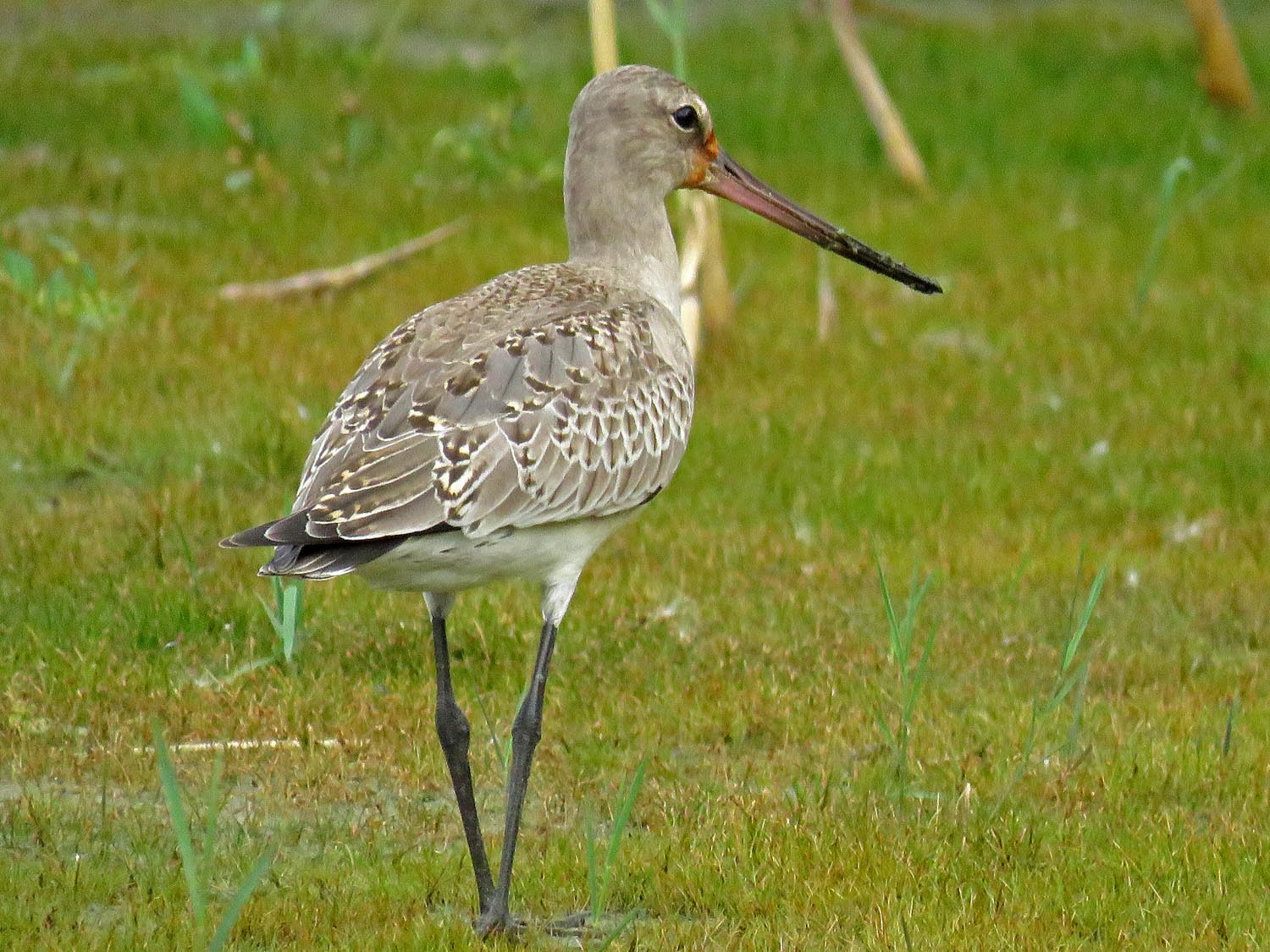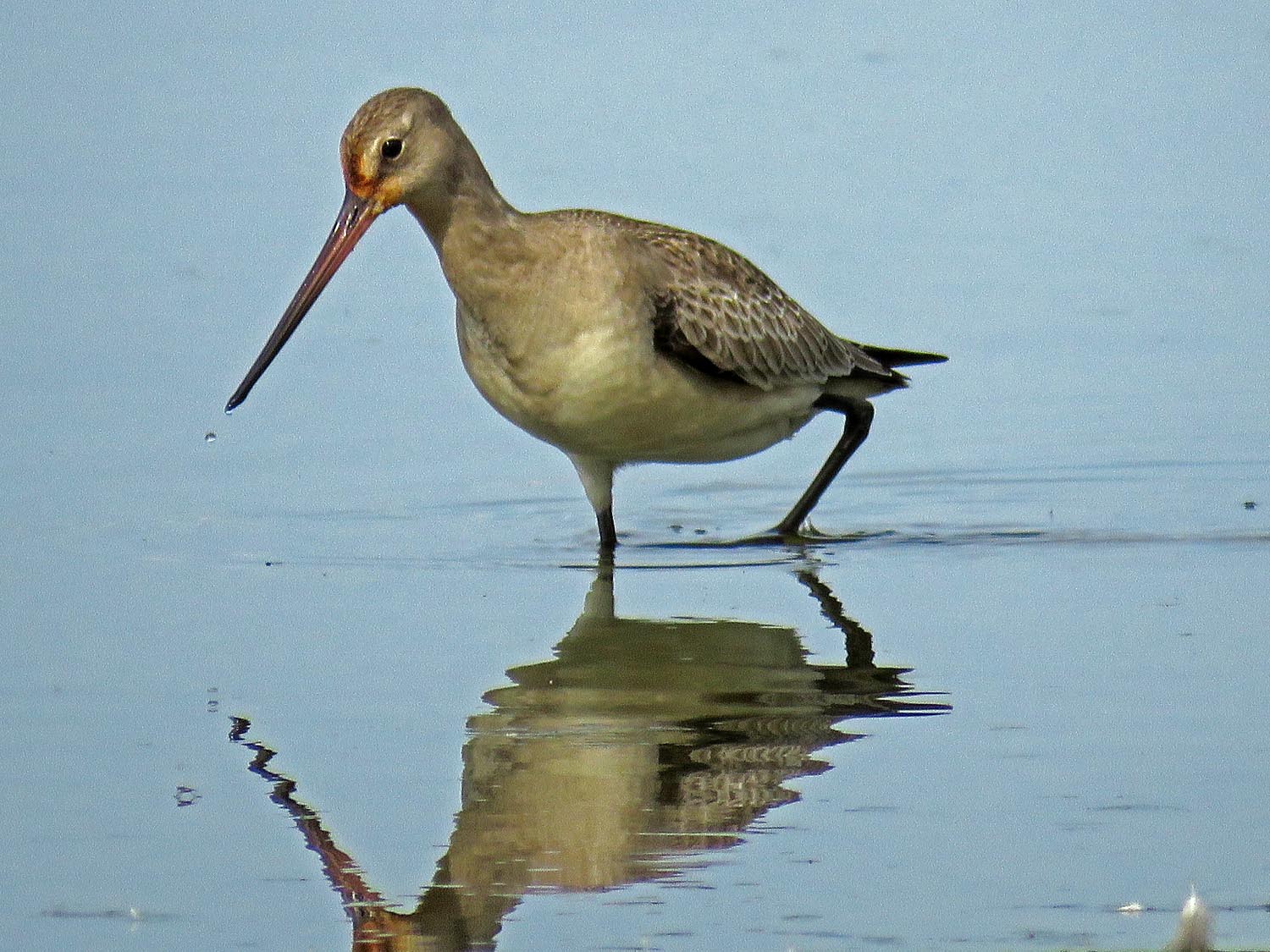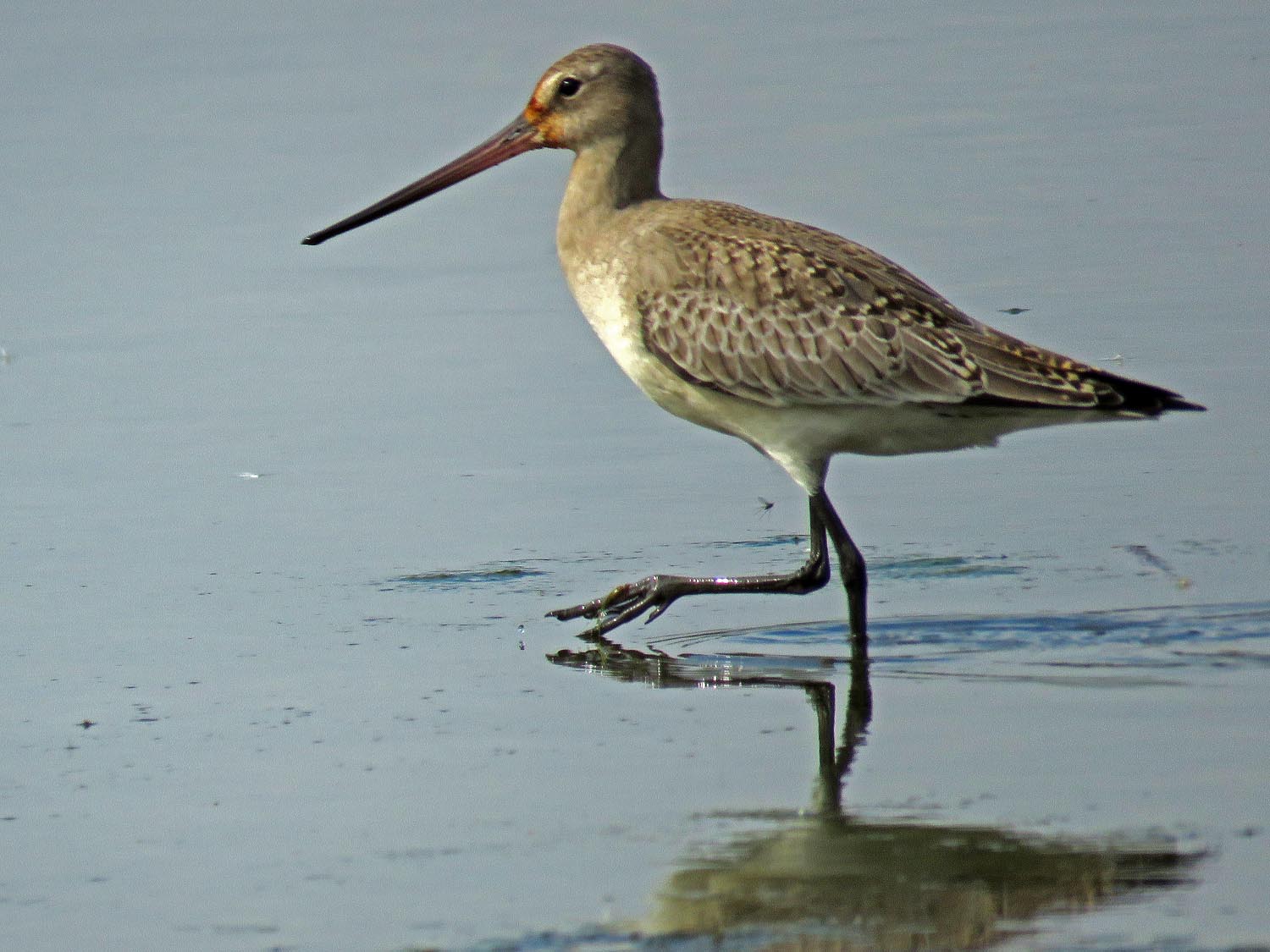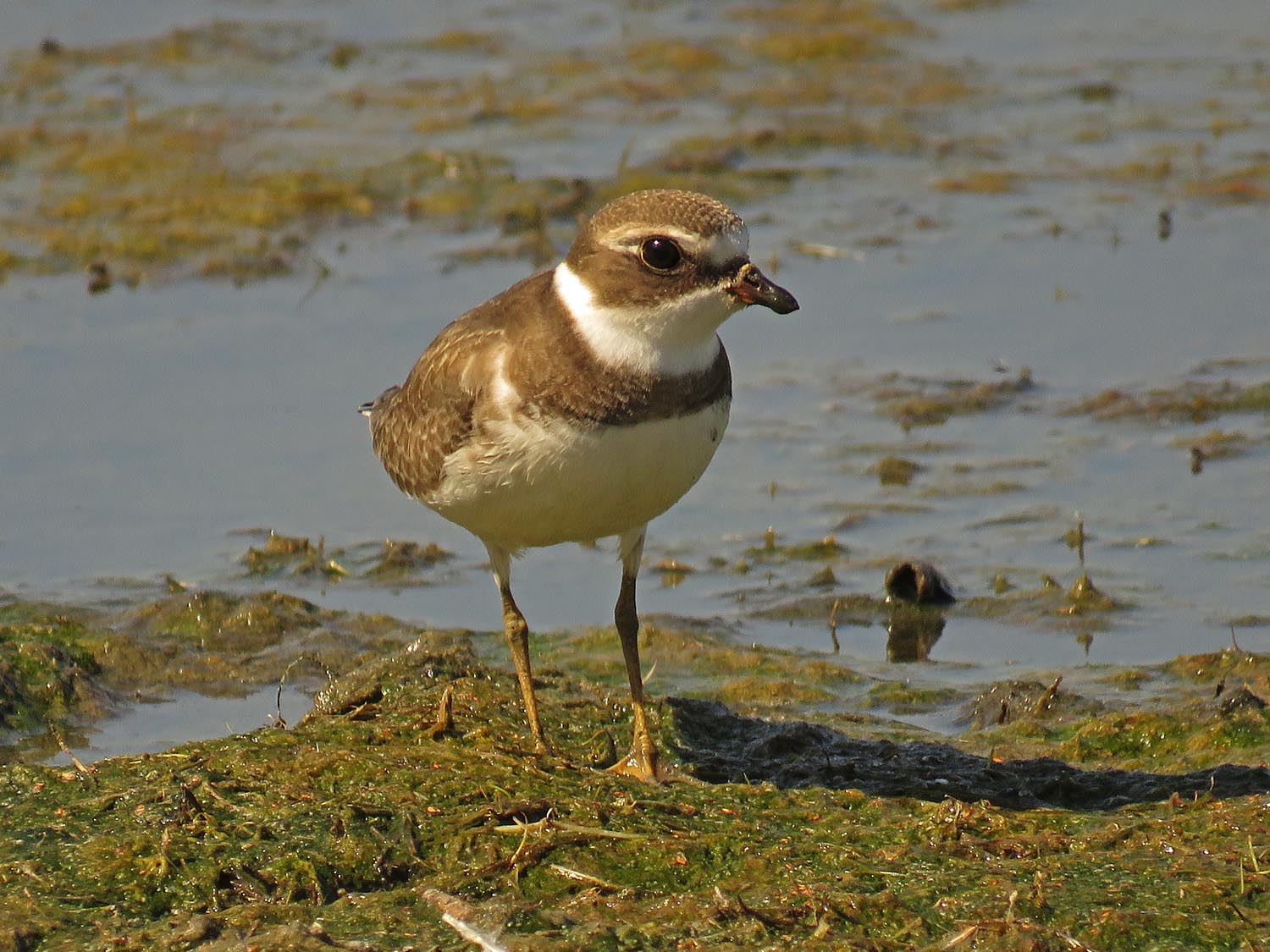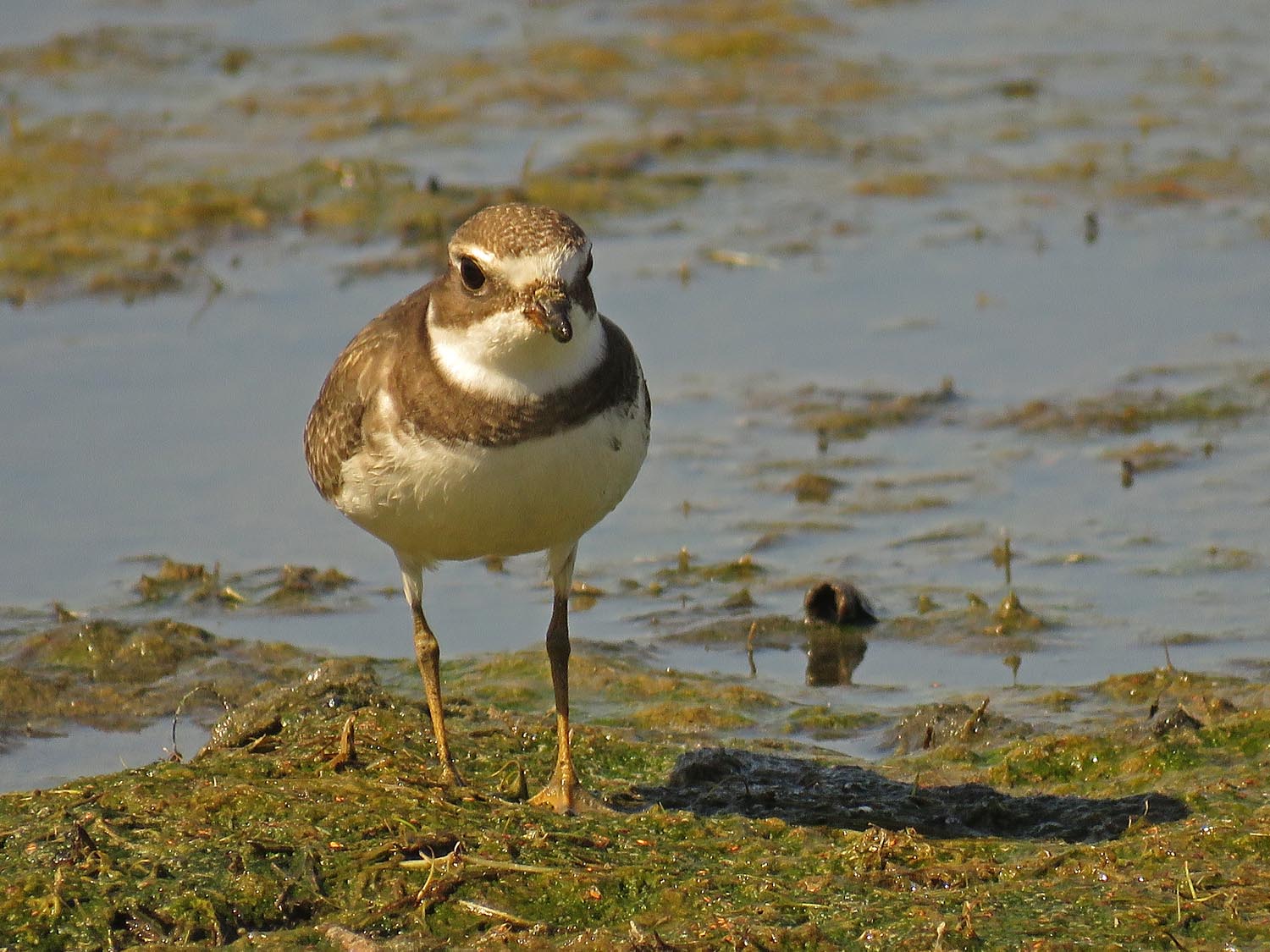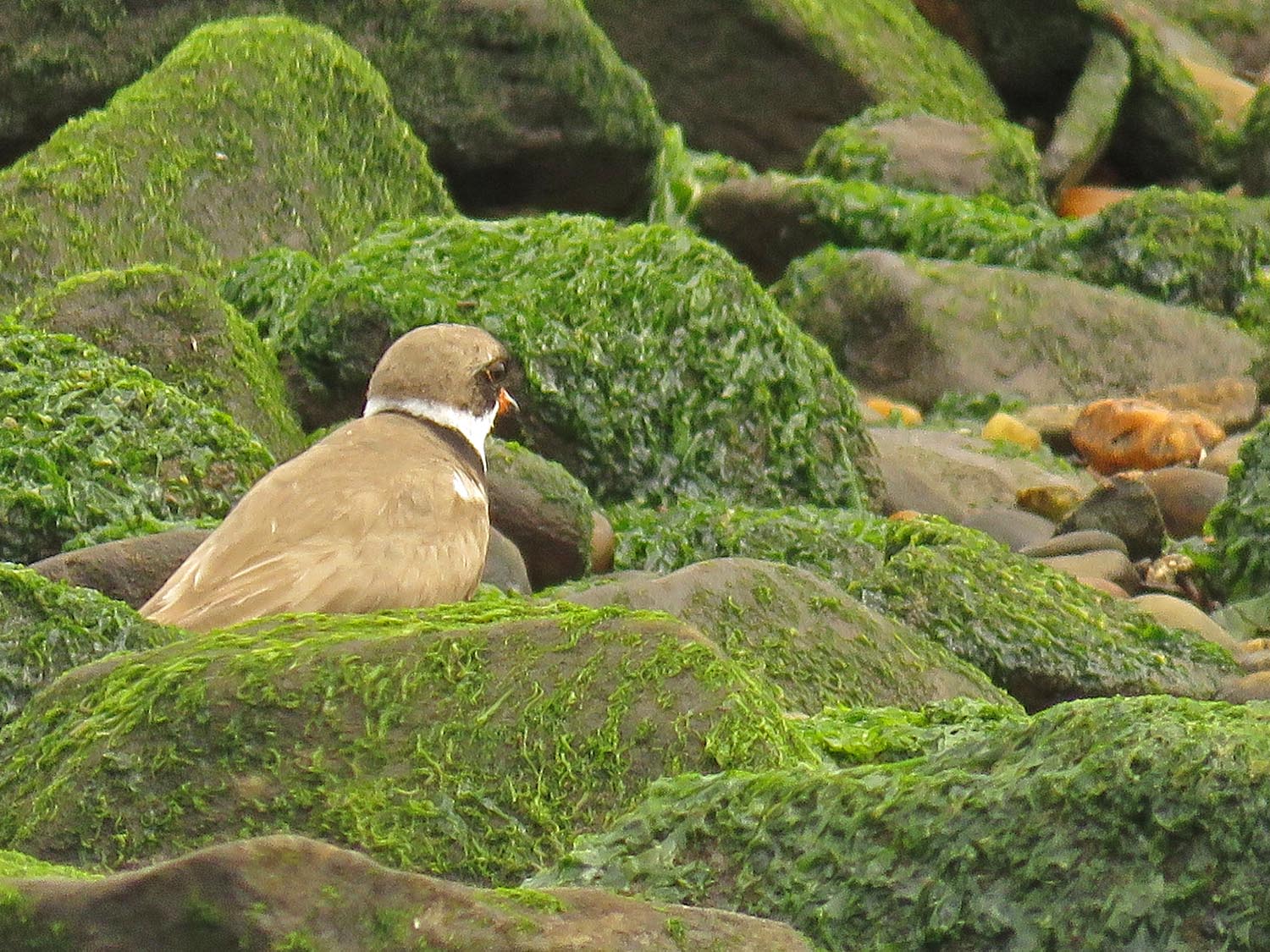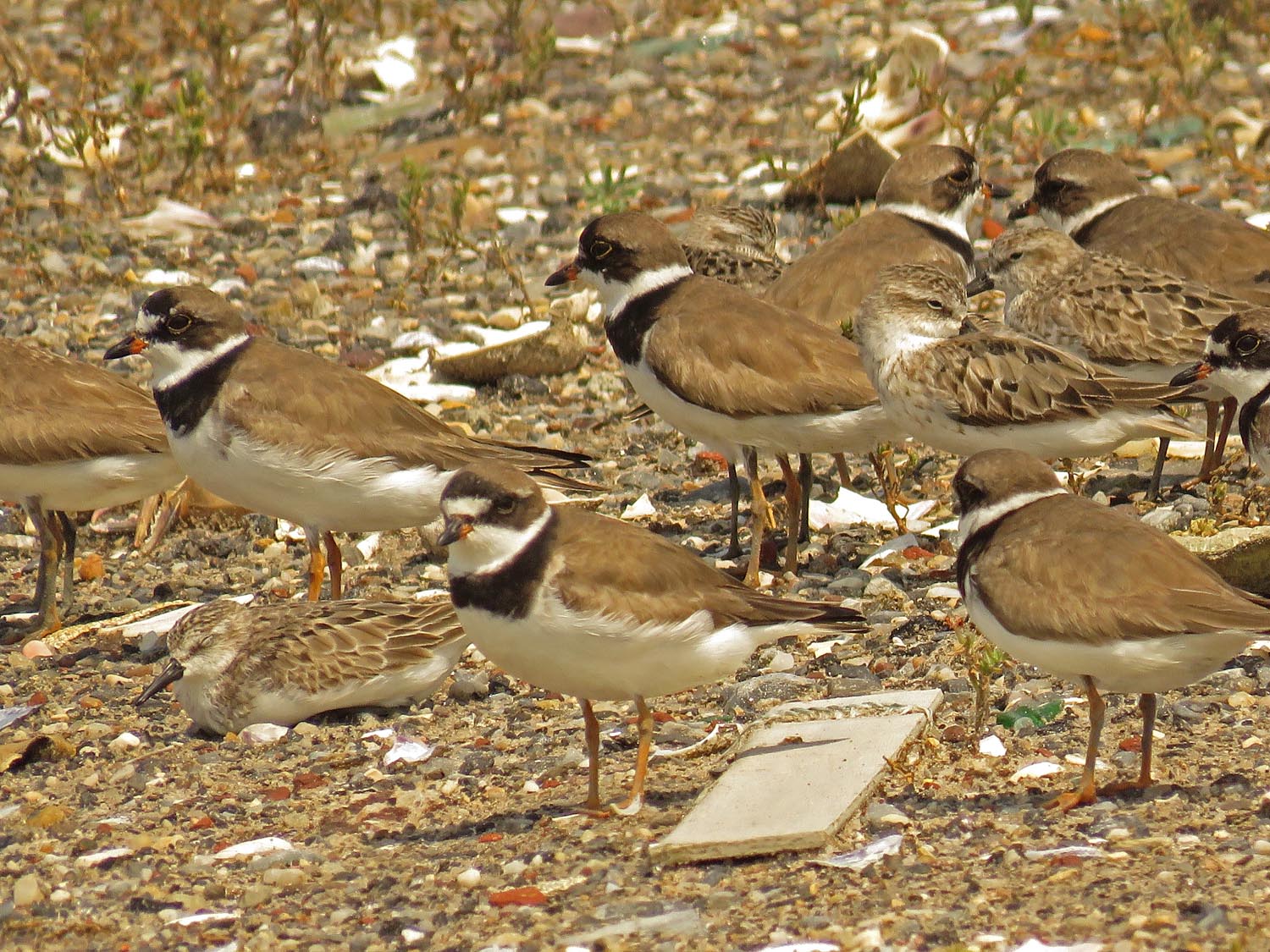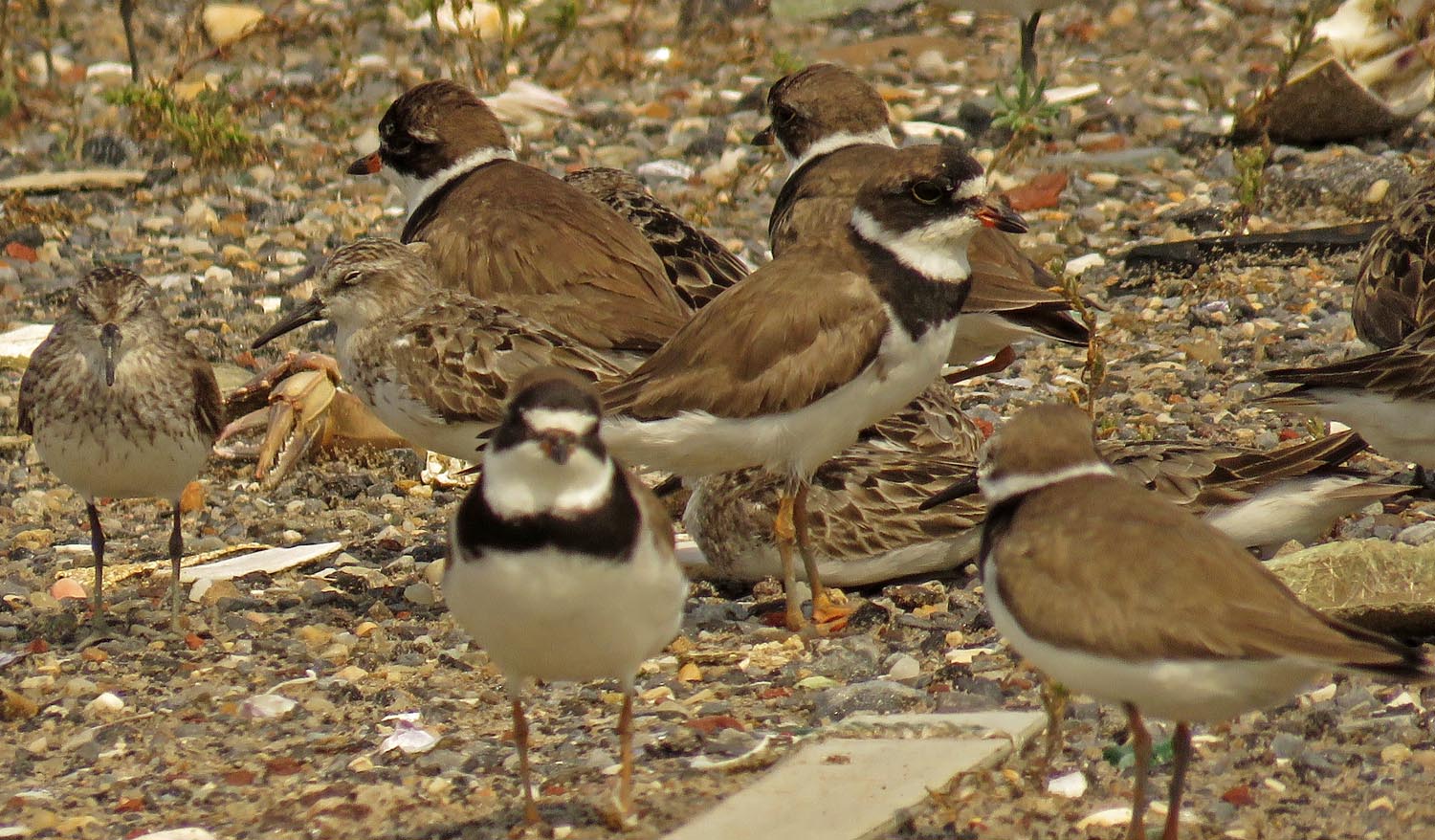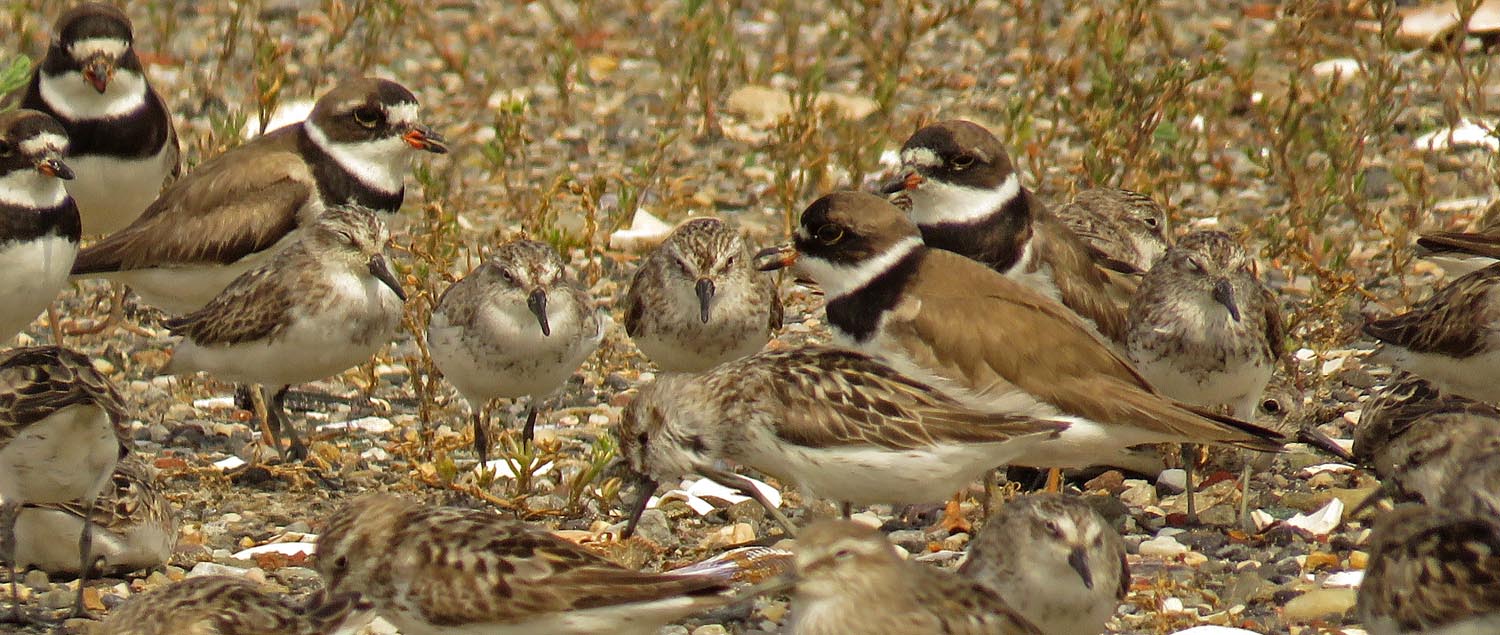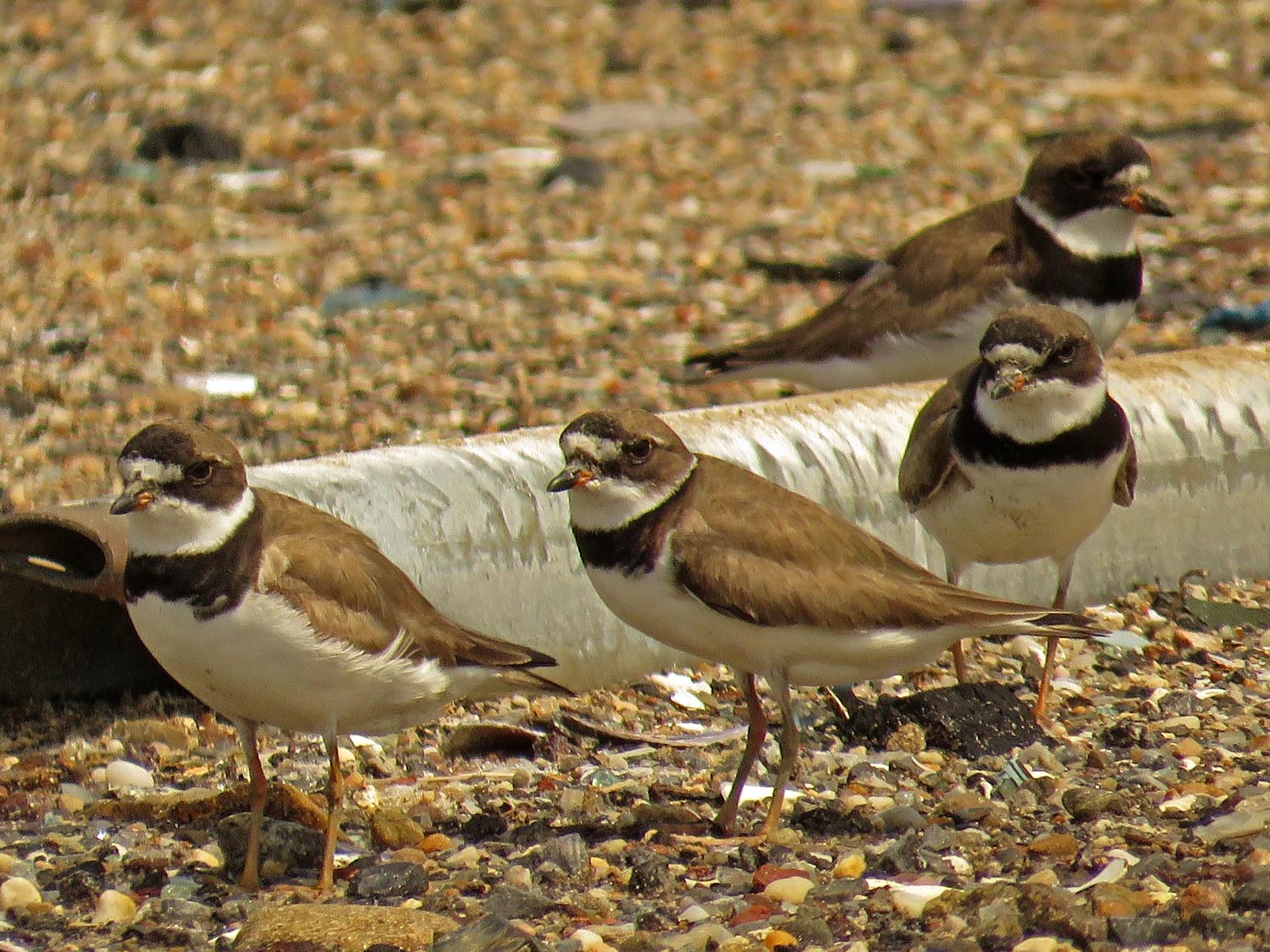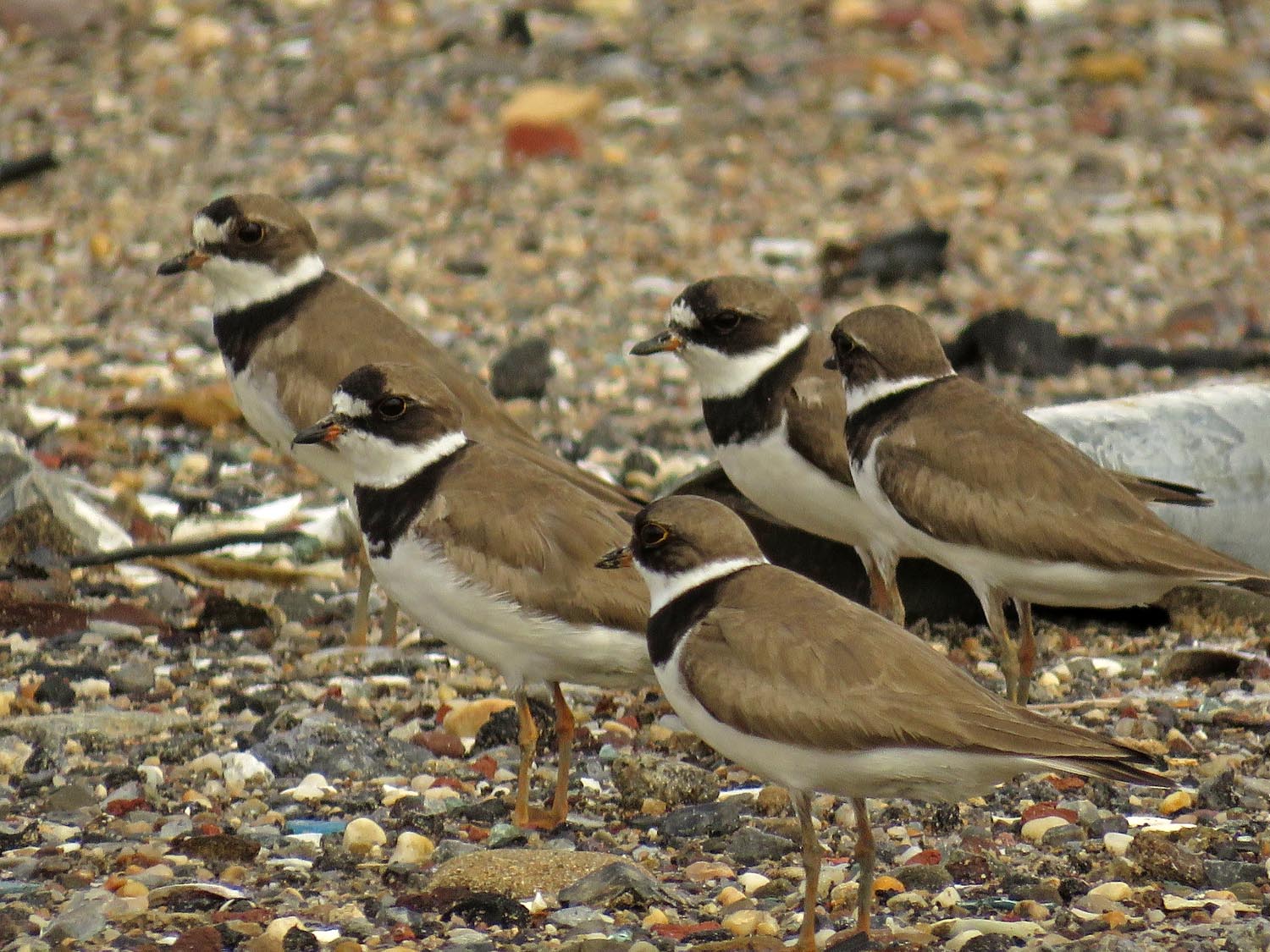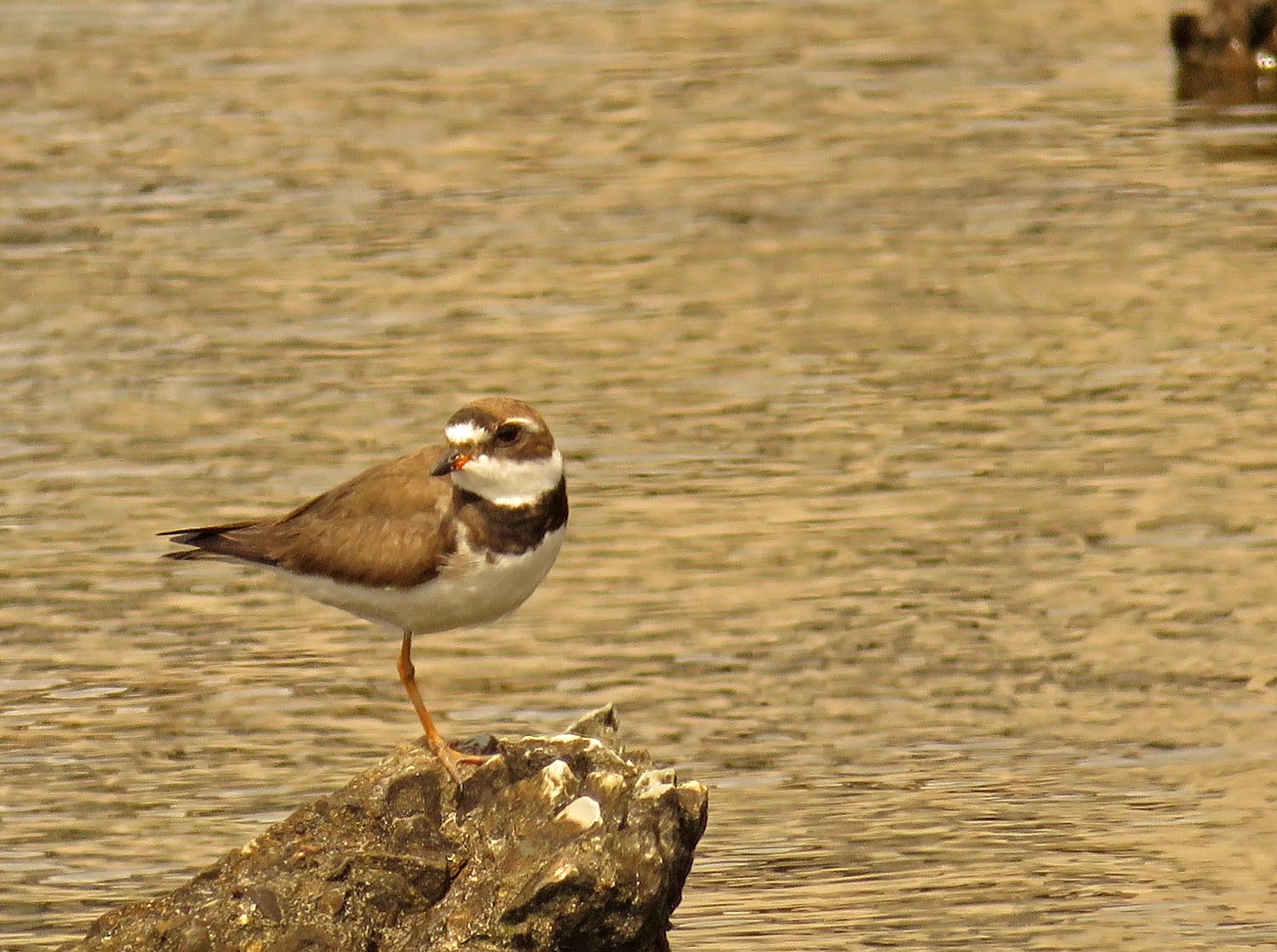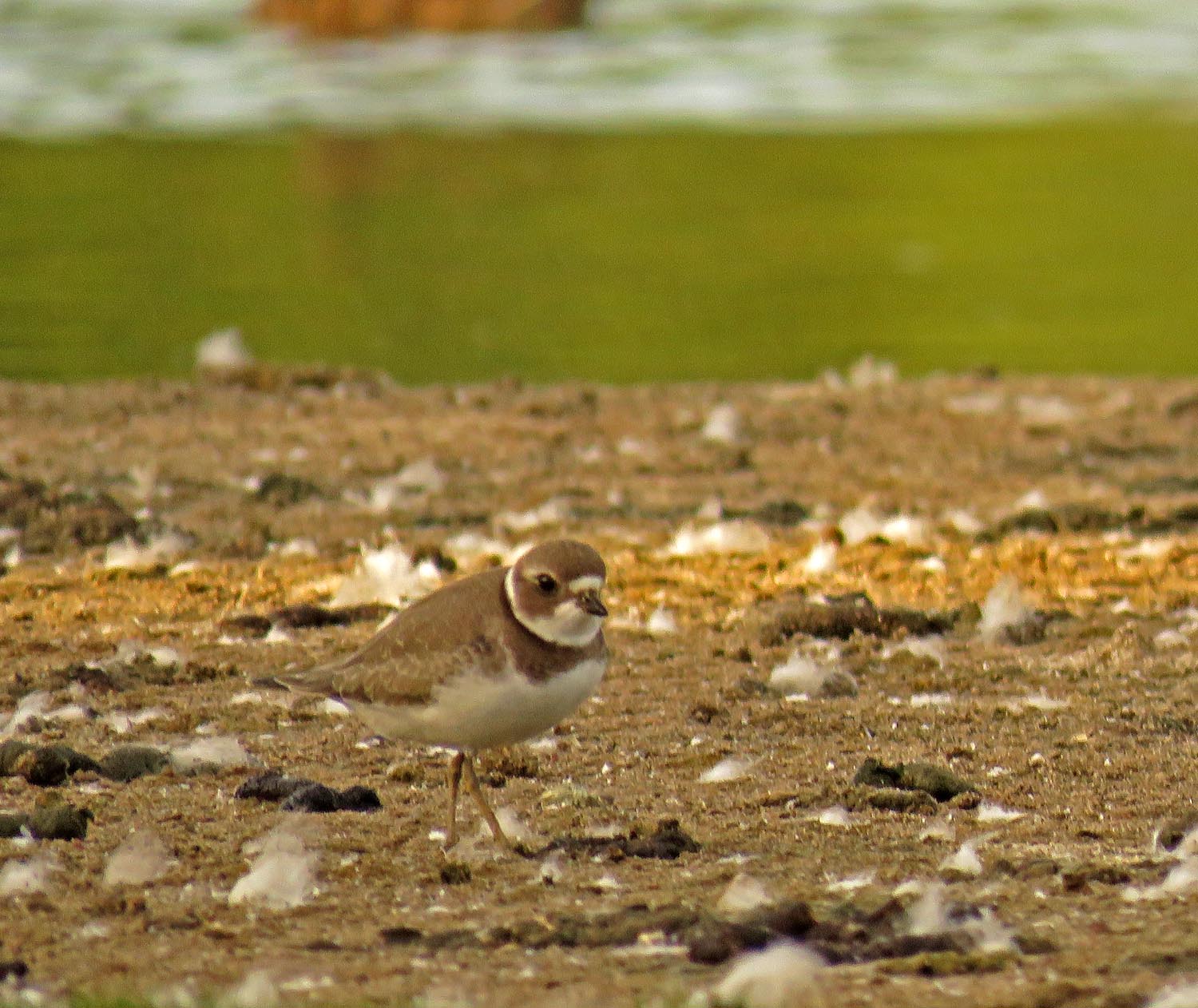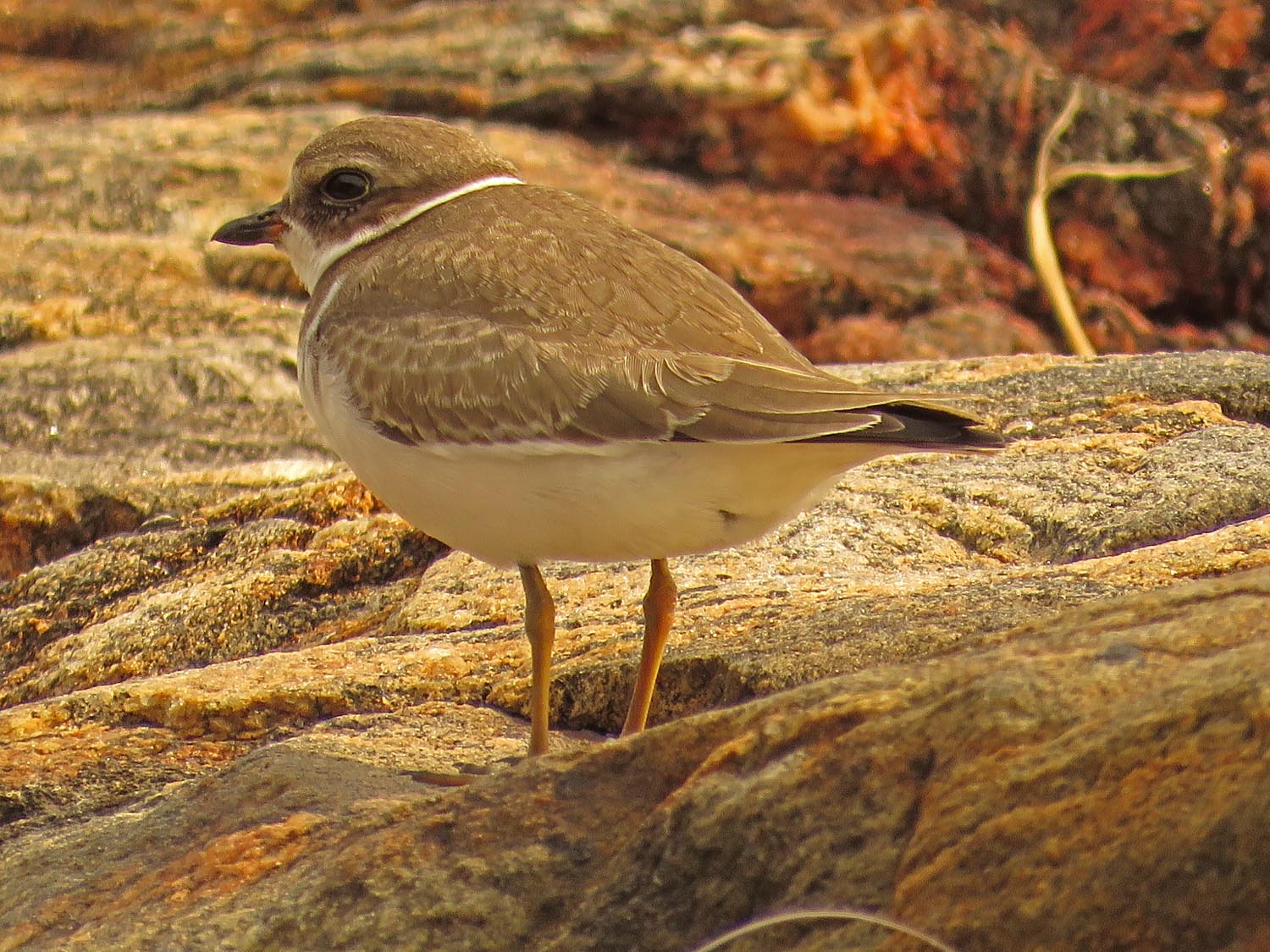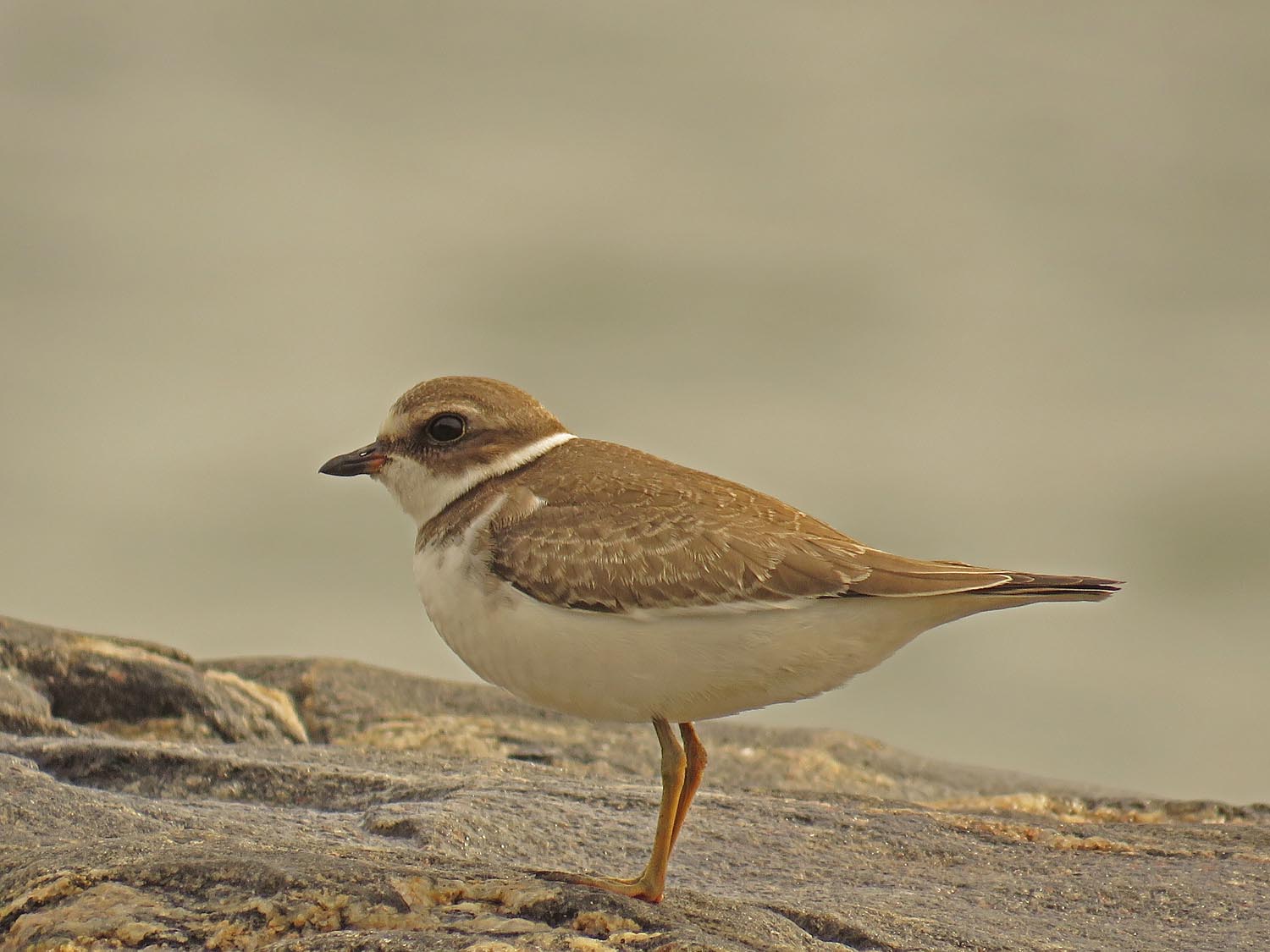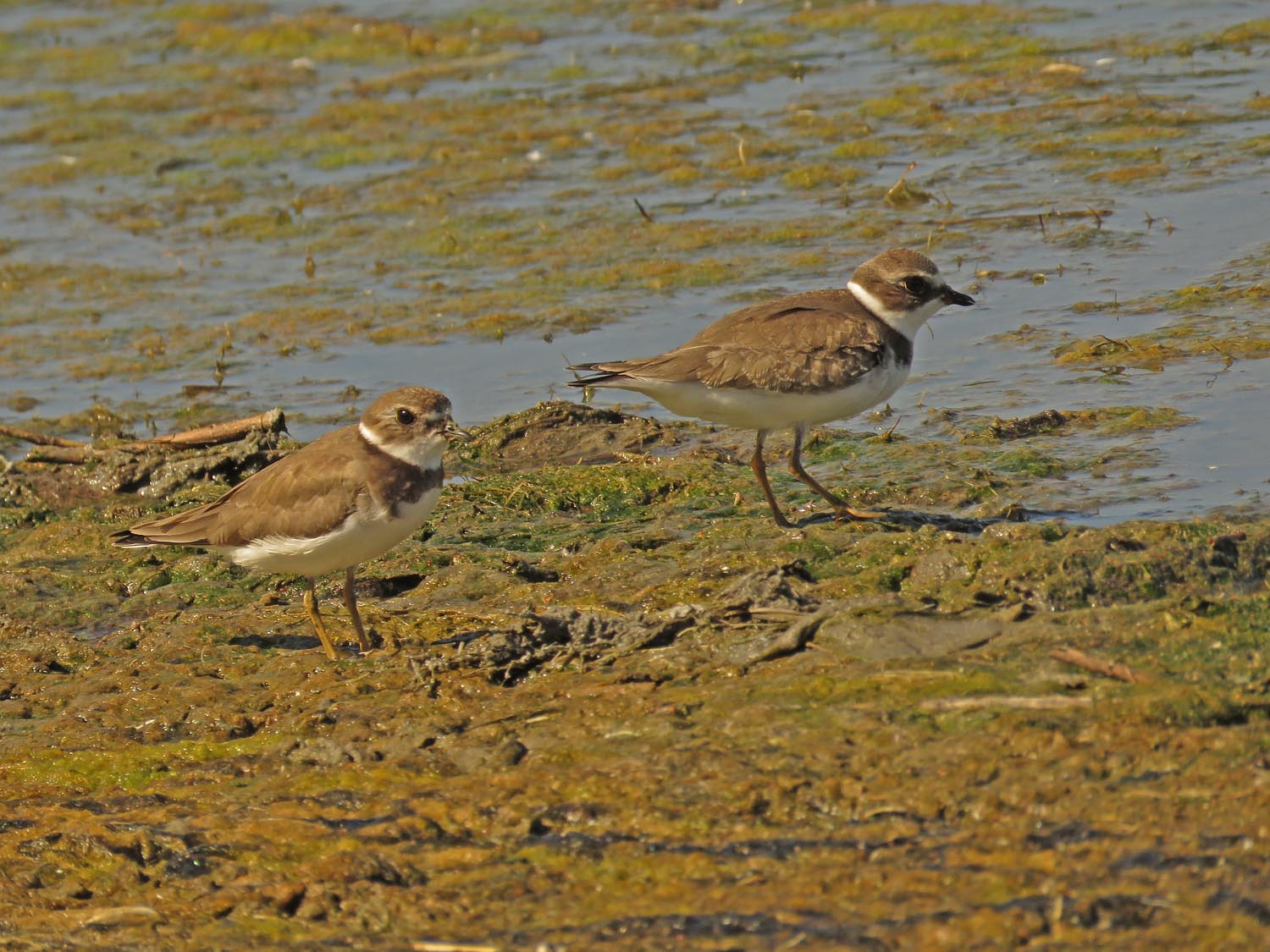Hudsonian godwits (Limosa haemastica) breed in remote areas of the Arctic and spend the winter in South America, and thus are not seen all that often even when they are migrating. When a Hudsonian godwit visited Jamaica Bay Wildlife Refuge in early October, it was a great opportunity to film this long-billed, long-legged shorebird. According to the Cornell Lab of Ornithology, "Hudsonian Godwit is on the 2016 State of North America's Birds' Watch List, which includes bird species that are most at risk of extinction without significant conservation actions to reverse declines and reduce threats."
Hudsonian godwit, Jamaica Bay Wildlife Refuge, October 11
I was able to watch this shorebird forage for insects with that long bill and run around the mudflats on the East Pond on October 7 and 11. The music is by Mozart, arranged for recorders and performed by Papalin.
The upturned bill and the red at the base of the bill distinguish this shorebird from the numerous greater yellowlegs I have seen at Jamaica Bay (I will post more shorebirds soon). The photos below were all taken on October 11. The last photo, next to a Canada goose, gives you an idea of the size of this godwit.



